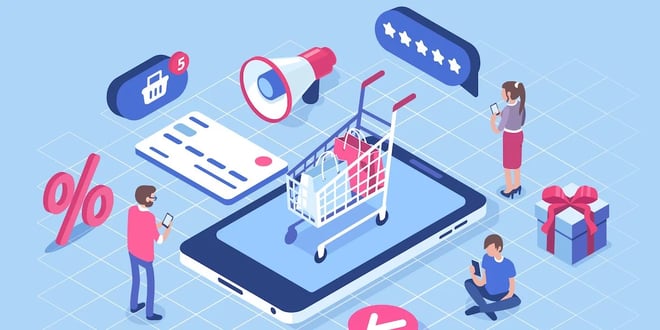You may also like
Subscribe now
for a weekly blog digest containing growth tips, industry updates, and product announcements!
4 Minute Read
The e-commerce market is booming—especially since the COVID-19 pandemic is pushing many away from going to brick-and-mortar stores. Yet, despite the high demand for online shopping, many shippers still have yet to take advantage of last-mile optimization software. According to one report, only 33 percent of shippers are currently using e-commerce logistics solutions.

This could be for any number of reasons, but in all likelihood many of these businesses don’t see all the ways that a last mile logistics solution can help them adapt to the changing demands of consumers. But the right solution really can help you manage e-commerce logistics efficiently while maintaining cost efficiency.
The challenges of handling e-commerce logistics are highly comparable to the challenges of traditional logistics, except e-commerce logistics requires faster order fulfillment.
One of the biggest challenges confronting e-commerce businesses involves the demand for next-day deliveries, same-day deliveries, and other additional last-mile shipping options. Traditional last mile solutions were created specifically for handing orders in batches, which doesn’t offer the necessary flexibility or cost efficiency for e-commerce shippers. E-commerce businesses also have to deal with seasonality and volatile order volumes, which makes flexibility in things like route optimization, dispatching, and customer communication essential.
Plus, there are also difficulties in managing reverse logistics for e-commerce platforms. Customers, after all, expect a cost-free and hassle-free return process. This means shippers will incur additional costs due to customer returns, which in turn, increases business freight expenses.
On top of all that, e-commerce fulfillment is often quite space inefficient. Why? There are a handful of reasons at play:
Less than full truckloads (or LTLs) used to be the preferred way of reducing shipping costs in traditional logistics management. It is, however, virtually impossible to rely on LTLs and provide customers with quick, free shipping at the same time. Businesses will have to choose between delivery schedules and estimating the LTL freight rate or the likelihood of undercutting shipping expenses.
Consumers may enjoy free shipping, but businesses ultimately have to balance this desire against the operational costs involved. By the same token, customers like next-day or same-day delivery—but more often than not, what consumers really want is visibility and transparency across the entire last mile. This is where the right delivery logistics platform can play a huge role—e.g. By helping you automate last mile communications with customers to decrease phone time and automate tracking and status updates so that customers can always visualize their orders in real time.
Of course, visibility isn’t a substitute for speed and precision. Luckily, advancements in technology are helping businesses balance both costs and customers’ expectations of free or discounted shipping and fast deliveries. Last-mile solutions offer a way of scheduling pick-up and drop-offs more efficiently as well as full visibility on fleets and orders—helping businesses expand their capacity by finding the shortest routes for each delivery and more proactively managing exceptions.
E-commerce logistics is one of the most complex operations around the world. Businesses must research well to know when and how products are ordered, the various shipping options they need to offer, and how to keep shipping costs low. Below are tips for managing e-commerce logistics effectively:
E-commerce logistics is complex and filled with risks. Yet, companies have big opportunities as online shopping is fast becoming the new norm. To succeed, businesses must invest in an advanced last-mile solution—one that can be integrated with other systems, provide real-time visibility on orders, and allow businesses to flexibly offer more shipping options.
for a weekly blog digest containing growth tips, industry updates, and product announcements!